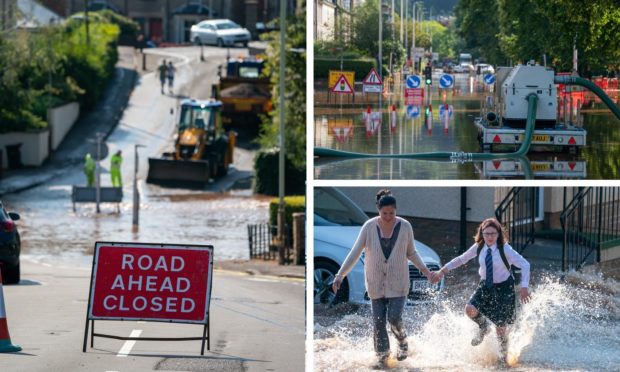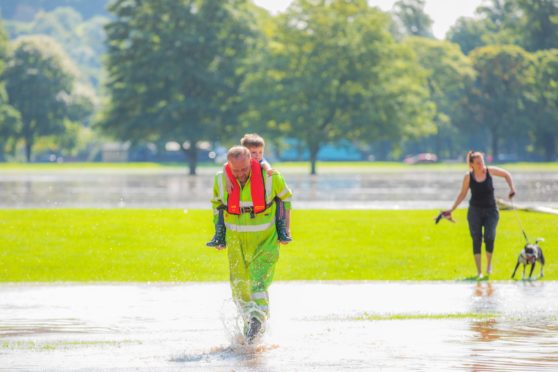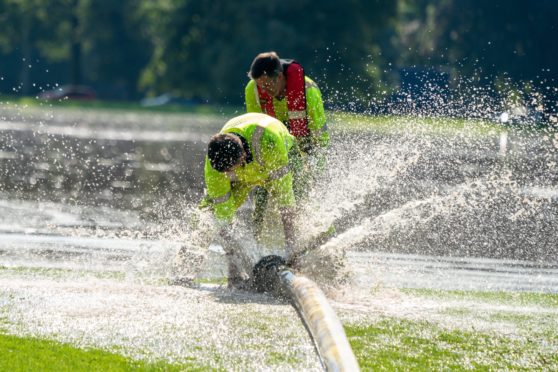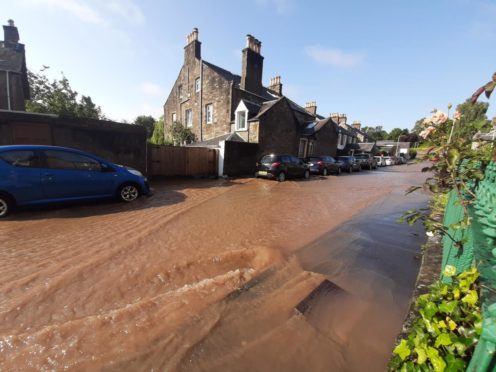A review into large-scale flooding in Perth and Kinross in August last year is set to be published next week.
Flash floods in August 2020 left parts of Perthshire underwater, and residents had called for an inquiry into the incident.
Perth and Kinross Council have said a review into the flooding and the response would be put in front of its environment and infrastructure committee next Wednesday.
Significant thunderstorms and extremely high volumes of rainfall hit Scotland overnight between August 11 and August 12.
Parts of Perth, Alyth, Dunning, Forgandenny, Kinross, Pitlochry, Blairgowrie, and Methven were particularly badly affected.
In September and October 2020 the council hosted online meetings with residents and businesses to discuss the impact of the flooding and the response.
Locals in South Inch, which was severely affected, had called for an inquiry into the incident, with questions about how flood gates were used during the storm.
They said £25 million defences installed in 2001 had been left open, causing water from nearby Craigie Burn to overflow.
Scott Street, Marshall Place and Nelson Street disappeared under rivers of dirty brown water as a result of the storms.
Over 200 properties were affected by flooding internally, with “many more” affected externally.
The council said Met Office statistics showed the majority of the rain fell between midnight and 3am in Perth, with 43.4mm falling in the space of an hour.
Total rainfall in Perth for the 24 hour period from 6am on August 11 was 86.4mm – more than the total expected rainfall for the entire month.
The review looked at the council’s immediate and subsequent response to the emergency and has developed a number of recommendations for the future.
But saying there was a limit to what could have been done, the council said it was informed that the alert warning for the region was being upgraded to reflect that a severe storm was imminent as the level of rain falling became significantly heavier.
Perth flooding review to contain recommendations for councillors
As such, they said no precautions could have been taken, but stressed they had been quick to respond on the evening of the event taking steps to reduce its impact.
However, they added, given the level of rain that fell in a very short period, there would “always be a limit to what could be done”.
After the report is submitted the committee will be asked to agree on a series of measures to be put in place for the communities most affected by the flooding.
Environment and Infrastructure Convener, Councillor Angus Forbes said: “The severe flooding that affected many local communities in August 2020 was an experience no-one would wish to repeat.
“We wanted to ensure that a thorough review of this emergency situation was carried out, where we looked at the ways our response was effective and where we can improve on this for the future.
“This has taken some time, bearing in mind both the detailed nature of the review and the other pressures on council teams from the Covid-19 pandemic.
“This report reflects how we will be moving forward, and it comes at an important time when the next cycle of flood risk management strategies and local flood risk management plans are being worked on.
“As a Council we are also, together with SEPA, encouraging the public and businesses to get involved in a national consultation to share their views and help shape the future direction and delivery of flood risk management.”



